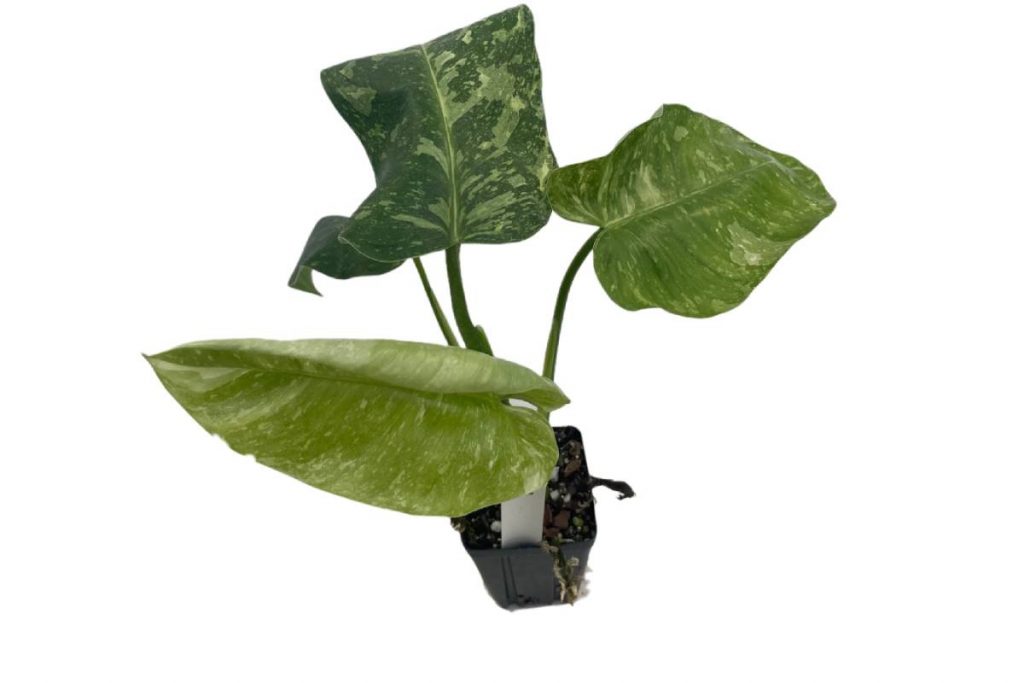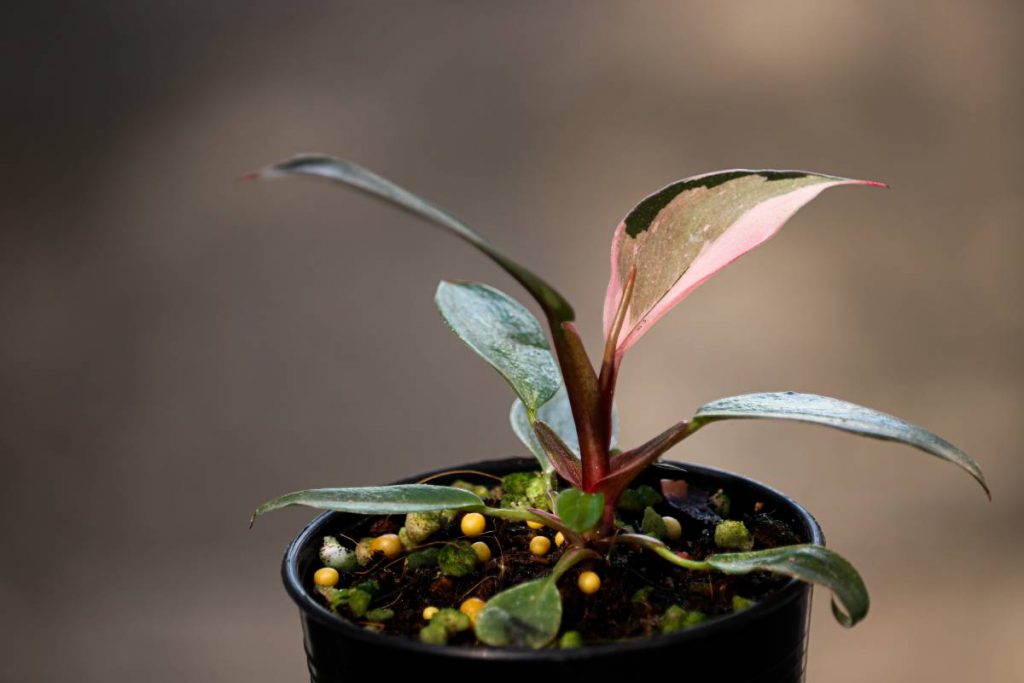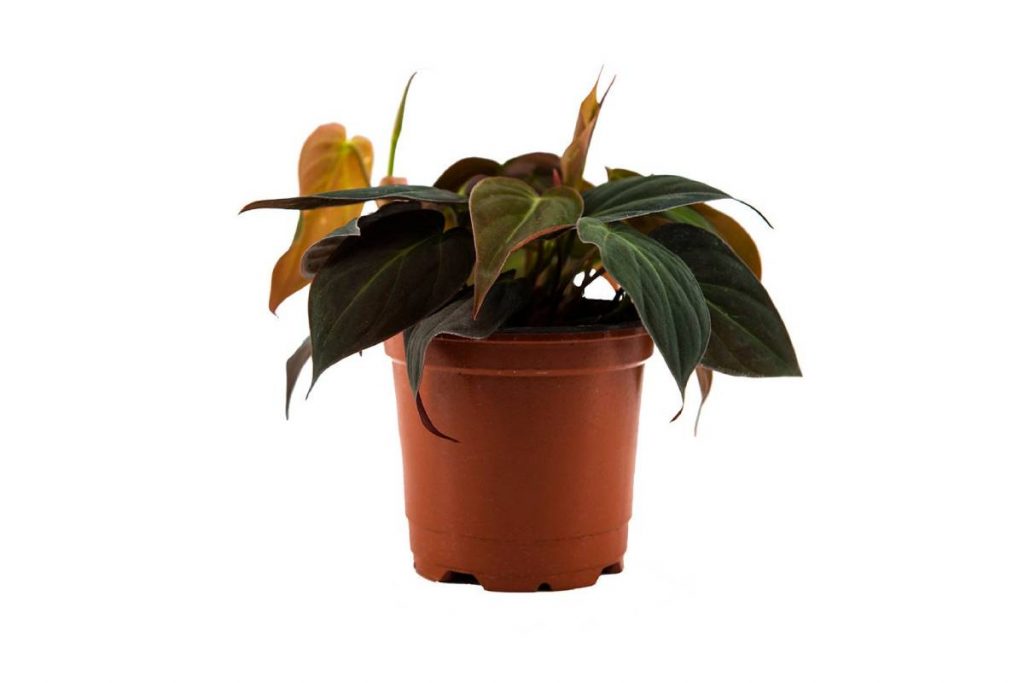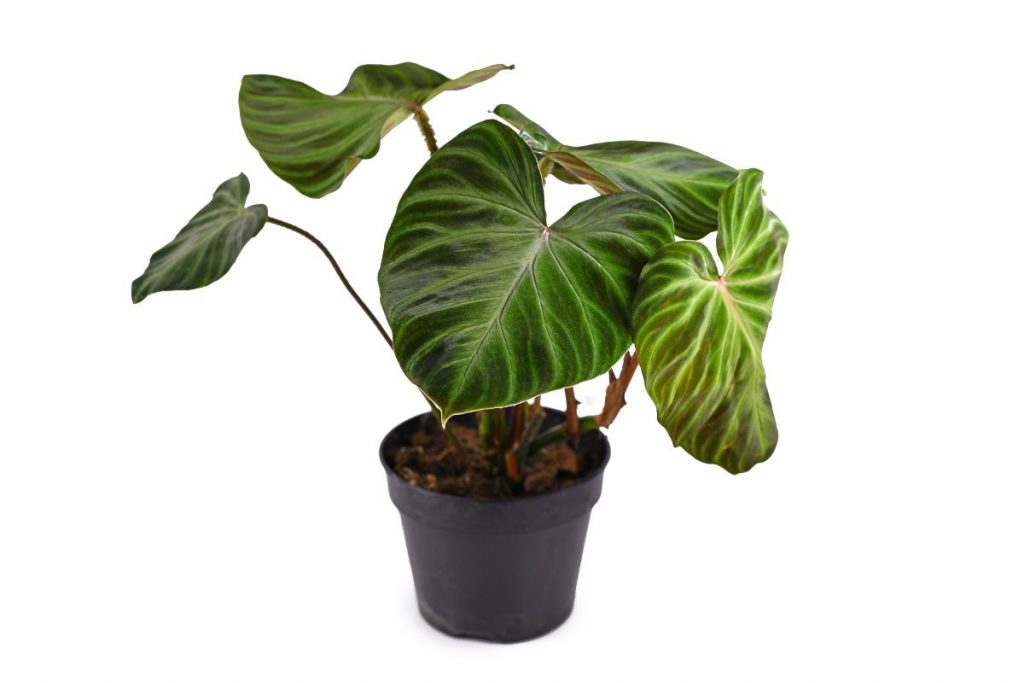There are many types of Philodendron, but one of the most beautiful and rare types of Philodendron is Jose Buono. These are very populating variegated plants with large variegated leaves which claim to decorate your house with a special display. These are indoor plants that can help you to decorate the interior of your house or workplace. People who are fond of beautiful and rare things can buy these hard-to-find plants. Common Philodendron can range from cheap to expensive, around $ 30 to $ 150. But the price of these rare Jose Buono is very high because of their rarity and ranges from $ 800 to $ 100000; these plants can be found only in specialized seller stores or niche shops.
What Is Philodendron Jose Buono?
Philodendron Jose Buono is a variegated plant, and this is one of the rarest varieties of Philodendron. Jose Buono is an evergreen epiphyte native to topics. This belongs to the Araceae family. These plants are very popular among house planters, and they would be the best option for you if you are a house planter. A Group of plants is also commonly known as aroids. Philodendron Buono usually grows up to 10 feet tall, about 3 meters, but if you grow them indoors, they will grow slowly as compared to outdoor, and the height will be only 4 feet tall. These are climbing plants, so a pole would be recommended for you to grow these plants.

One of the main features of these plants is their leaves, as they are very thick, beautiful, elongated, and have a leathery texture. The leaves of these plants are usually very big and grow up to 2 feet in length. Every leaf has its own unique variegation, which is available in many forms and colors. These variegations can vary from white cream-colored, speckled, half-moon, and mottled colors. Some of them can be of uniform light color. This variegation, after some time, will convert into a shade of bright green or chartreuse, and the old color will fade away.
How to Care Philodendron Jose Buono?
These beautiful variegated plants, philodendron Jose Buono are sensitive, and taking care of them is one of the main works that you have to do. These plants can make your house look beautiful, but you have to know about the caring guide of these variegated plants. There are various factors in caring for these plants, such as light, water, soil, temperature, humidity, fertilizing, potting, re-potting, pests, and diseases. All of these factors for taking care of these plants are mentioned below.
Light Requirement
The Philodendron Jose Buono opts to have oblique daylight in medium or vibrant quantity. Sunlight could be very critical for the coloring of those leaves. It could be best to apply herbal light; however, in case you use synthetic light, it might now no longer be a problem. You will want fluorescent lights or LED development lighting if your home would not have sufficient windows; otherwise, you need to maintain the vegetation inside the internal room of your own home. Make certain that you haven’t placed that philodendron Jose Buono in a place in which the depth of daylight could be very excessive. This vegetation is susceptible to excessive daylight depth.
Water Requirement
These plants need less water in summer and spring; once in a week would be enough for philodendron Jose Buono. However, in winter, these plants need water once in 10 – 12 days because, in winter, they collect water from fog. Apart from this, the soil should not be waterlogged, but you can still keep the soil moist. Waterlog can damage the root of your plants.
If you don’t know when to water your philodendron plant, just use your fingers to check the top most soil of the plant’s pot. If it feels dry, then you can water your plants, and if your soil is not dried yet, make sure to let it dry completely and then water.
Method of soak and drain would be the best technique to water your Philodendron Buono. Here are some steps to use this technique.
- Slowly start pouring water on the base of the plant so that it can soak the substrate completely.
- After that when water stars pass through the holes that are known as drainage holes. Let their skin be complete until it gets dried; you can do this in the kitchen sink or bathtub.
- When it is soaked, completely put the plant back into its tray. This method is identical to the heavy natural rainfall in tropical rainforests.
Soil Requirement
The best soil for these Philodendron Jose Buono would be most likely to be well-drained, porous, a little bit acidic in nature, aerated, and most probably rich in nature. These plants do not usually grow in the soil just like all the other epiphytic aroids; they grow in the mixture of dead leaves, old barks, and other organic substances which can be found between the tree branches.
You can also use coir as it is considered the best substitute of soil for these philodendrons because it breaks down slowly and has a better draining capacity. This coir would be an ideal choice for you to grow your plants. Additionally, you can also grow these plants in nutrient solution and LECA. Below are given some of the great aroid mixes that you can use while potting these variegated plants.
- 1 part of a coir
- 1 part of perlite for extra drainage
- One part of orchid bark increases acidity to the roots and provides them aeration.
- ½ part of horticultural charcoals because it helps to through-out impurities and helps to increase the porosity of the soil.
- To provide a nutritional boost to your plants, use ½ part of worm casting because it is rich in nature.
Problems of overwatering cannot be just caused by watering your plants again and again, but they can also be caused by your potting, which you have chosen poorly. A poor potting mix leads to less drainage, and this does not let the substrate fry out until the next watering. These all things that are mentioned above can help your Jose Buono to get rid of the rotting of their root.
Temperature Requirement
The normal and best temperature range for your variegated philodendron plants is between 54 and 88 degrees F (13 to 27 C). This type of plant can be grown easily at home as these plants are not prone to a cooler temperature. Although, it can suffer permanent loss if kept at 10 C or lower for a long time. Make sure not to place these plants near air conditioners or any heating units because sudden temperature fluctuations can give a shock to the plants, which they cannot tolerate.
Required Humidity
These plants are capable of surviving a low level of the humid environment of at least around 40 percent, but it is still recommended to boost it to at least 60 %. These variegated plants are tropical plants and can be found in tropical forests. They have a moisture level of 80 % and above in their surrounding while they are in their native place. Higher humidity leads to a better and bigger growth of leaves of the plats, help them unfurl better, and prevents them from pests of house plants such as spider mites.
In these plants, it would be ideal to use a humidifier to meet their humidity need, but if you cannot use them, don’t worry. You can put pots on the top of the pebble tray alternately; after that, combine them with light misting and leave them for at least 24 hours. Make sure that your plant receives a good level of air circulation while misting this Philodendron Jose Buono. And let the foliage dry out before misting them again. They cannot be left wet because plants can develop fungus in them, and this can also damage these plants.

Fertilizing
Philodendron plants are low feeders, and so is this Jose Buono; they require very few fertilizers. Make sure only to feed diluted fertilizer once every 4 – 5 weeks in the autumn seasons. You can stop fertilizing your plant when it enters the period of dormancy.
Experts recommended using a low-release fertilizer on variegated plants which have a N P K nutrient ratio of 15 – 5 – 10 and should be diluted to half strength.
Potting and Repotting
This is one of the major and critical processes while planting these plants in the pot; make sure to be safe while planting these plants.
Gather all of the substances that you are going to apply in potting; you’ll want a brand new pot, new clean potting soil, and water. The new pot needs to be larger in size to offer those vegetation areas to grow. Gently choose up the sand from pots slowly till the entire sand is eliminated from the pot, and put off your plant in a secure way so that no harm occurs to the roots.
Check the roots of your vegetation that they’re nevertheless healthful, and if they’re not, you need to trim the dangerous root earlier while potting them. After that, install a brand new pot and fill it with new soil, and plant the roots of Philodendron in them; water them slowly; that is how potting can be done.
These variegated plants are slow-growing, so they do not need re-potting more often. You can re-pot them one in 2 or 3 years. You will know when to re-pot your plants by seeing the roots through drainage holes. This is the time for the plant to grow more once re-potting is done.
One of the best times to re-pot these plants is in the early summers because this is the growing season of the plants. You should replace the pot with another bigger pot than the previous one. And the new potting mix should be added to the new pot. The use of plastic pots would be ideal for these Jose Buono because the plastic helps soil not to dry out much. Make sure your plastic pot has drainage holes at the bottom of them; if not, try to make holes for drainage; this will help to prevent roots from sitting in water. Not put the pot in a watery decorative thing, but you can put it in a dry area.
Pest and Diseases
If you follow the above caring guide, your Philodendron Jose Buono is most likely to be free from most problems like pests and diseases. But still, there is a common problem that many users can suffer from root rotting.
One of the most common problems that can be seen everywhere with these plants. This happens when your substrate does not drain well. You should substitute the soil in your potting mix for coir. Amendments are also recommended to improve drainage and root aerations, such as orchid bark and perlite. Let your soil dry before watering them again.
These plants are highly resistant to diseases and pests, but still, they can occasionally attract spider mites and mealy bugs. Check the undersides of the leaves on a daily bases to check for any infestation. To get rid of pets, you can spray the leaves with a water solution mixed with isopropyl alcohol. Spraying it once a week would be enough.
Height and Growth of Philodendron Jose Buono
These are slow-growing plants with a general growth of about 10 feet in height if they grow in an environment. While the growth of these plants indoors is not as much as in nature, they grow up to 4 feet only. They become 3 feet wider because these variegated plants are climbers in nature; they grow on any surface they catch. A moss pole is recommended for you to use while this Jose Buono grows.
Does Philodendron Jose Buono Have Flowers?
No, this philodendron Jose Buono plant does not contain any flowers. However, the leaves of these variegate plants are much more beautiful than the flowers of ordinary plants because they often have more than two colors. They have diverse color options like pink, orange, and many more.

How Do Propagate Philodendron Jose Buono?
These plants can be propagated through the stem cutting method, which is very easy to use. Use a cutter or stem cutting tool to cut a stem between the growth nods and place the cutting in a glass of water. Try to keep them away from direct light. Keep the cutting stem for a few weeks and provide them indirect light. You can transplant the stem when it grows slightly.
Is Philodendron Jose Buono Poisonous?
These plants contain toxins in less quantity, but still, they can be dangerous because toxins such as calcium oxalate crystals and these toxins are poisonous. Ingesting or digesting these plants can be very harmful. These poisons activate when someone chews, consumes, or swallows these plants. So it would be dangerous to keep these plants on the floor if you have kids or pets in your house.
How Much Is Philodendron Jose Buono Worth?
These are very rare plants, so the cost of these plants is much more than any ordinary plant. It ranges from $ 1000 to $ 4000; they are very hard to find and can be found only in specialized stores or niche shops. These plants are often found in the tropical rainforest of South America.
Difference Between Philodendron Jose Buono and Other Similar Plants
All the variegated plants are different in many factors such as size, shape, care, and many more. So here is a short comparison between these plants. And these plants also have many similarities, such as caretaking, etc.
Philodendron Jose Buono vs. imbe
- Maintenance of these plants is very less because they are slow-growing plants. They both need warm and humid temperatures to survive and grow in their best form. They should be fertilized during the growing season.
- The growth rate of both plants is different philodendron Jose Buono grows faster than the Imbe plant. Jose can grow to their full size in 2 – 3 year while other takes many years to grow, and this applies in their natural habitat.
- Soil requirement is a bit different in these plants. Jose needs a neutral PH soil while Imbe prefers soil more acidic.
Philodendron Jose Buono vs. Paraiso Verde

The shape of Paraiso Verde has more biggest and irregular shaped leaves as compared to Philodendron Jose Buono. The color of Paraiso Verde has a mottled green variegation leaf, with bigger white patches to their leaves and edges that are much cleaner. All other things like maintenance and soil requirements are almost identical.
Common Problems
Common problems with these plants are that they are a little bit prone to pests and diseases and highly prone to overwatering. Make sure not to water these plants daily because they need water once their soil dries completely. Check the leave of your plants daily to spot any pests like mealy bugs and many more.
Final Words
Philodendron Jose Buono is one of the elegant plants you can use to decorate the interior of your home. These are rare plants, so if you like collecting rare things, it would be the perfect choice to buy them. Caring for these plants is not very hard; you can easily follow the above guide and learn to take care of these plants.



